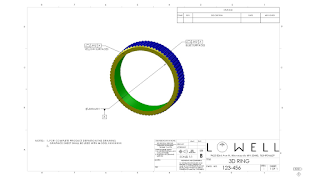Additive manufacturing is cited as the new frontier for
creating medical device components, with design flexibility that goes above and
beyond what traditional machining typically offers.
Across the medical device industry, companies are
increasingly adopting this technology in the search for faster product
development cycles.
But additive manufacturing and traditional machining have
different strengths that can’t be easily duplicated by the other. To take
advantage of the best of each process, companies are beginning to connect these
techniques to improve product development.
How traditional
machining enhances additive manufacturing
Many companies turn to additive manufacturing when there is
a feature or feature set that can’t easily be conventionally machined. It’s
also ideal for custom builds or when low quantities of components are needed.
Traditional machining is often best suited and more cost-effective when
components are being made in higher production numbers.
Another use for additive manufacturing is building near net
components. This is where traditional machining can best support additive
manufacturing – by transforming these components into finished pieces.
For
example, a product may be created via additive manufacturing with tolerances of
±0.01 inches, but the original design intent may require final tolerances of ±0.001
inches. That
level of detail and finishing, to date, is best completed by traditional
machining techniques.
Traditional machining is also ideal for finishing components
that require different surface textures. Once the texture is created via
additive manufacturing, machines can take over to cut flat surfaces, windows,
corners and edges to precise measurements that meet the design intent.
This combined approach is an innovative trend for component
design and fabrication, and will continue to grow with the widespread adoption
of additive manufacturing. Talk to the team a Lowell to determine if this approach is
right for your device.





